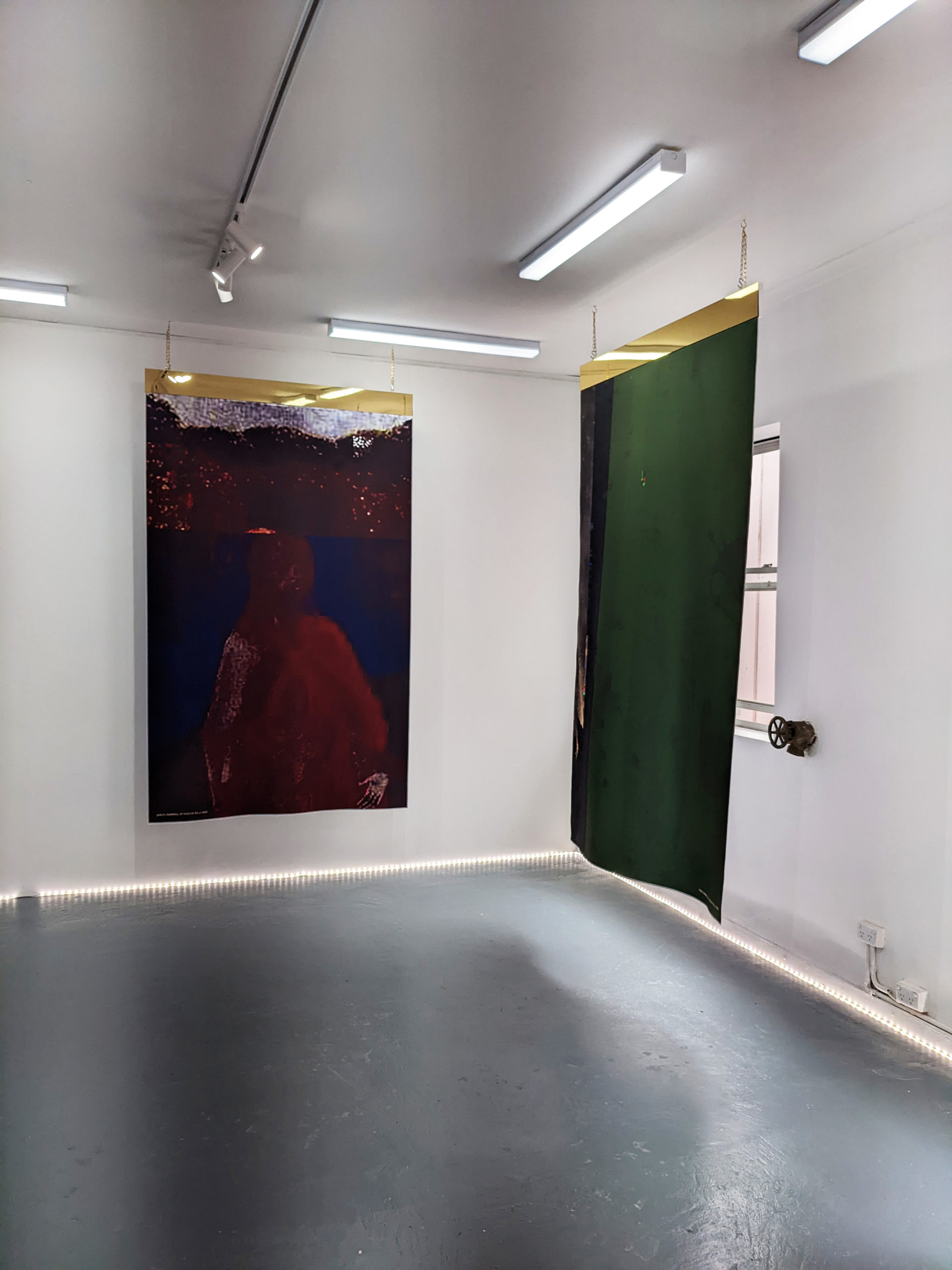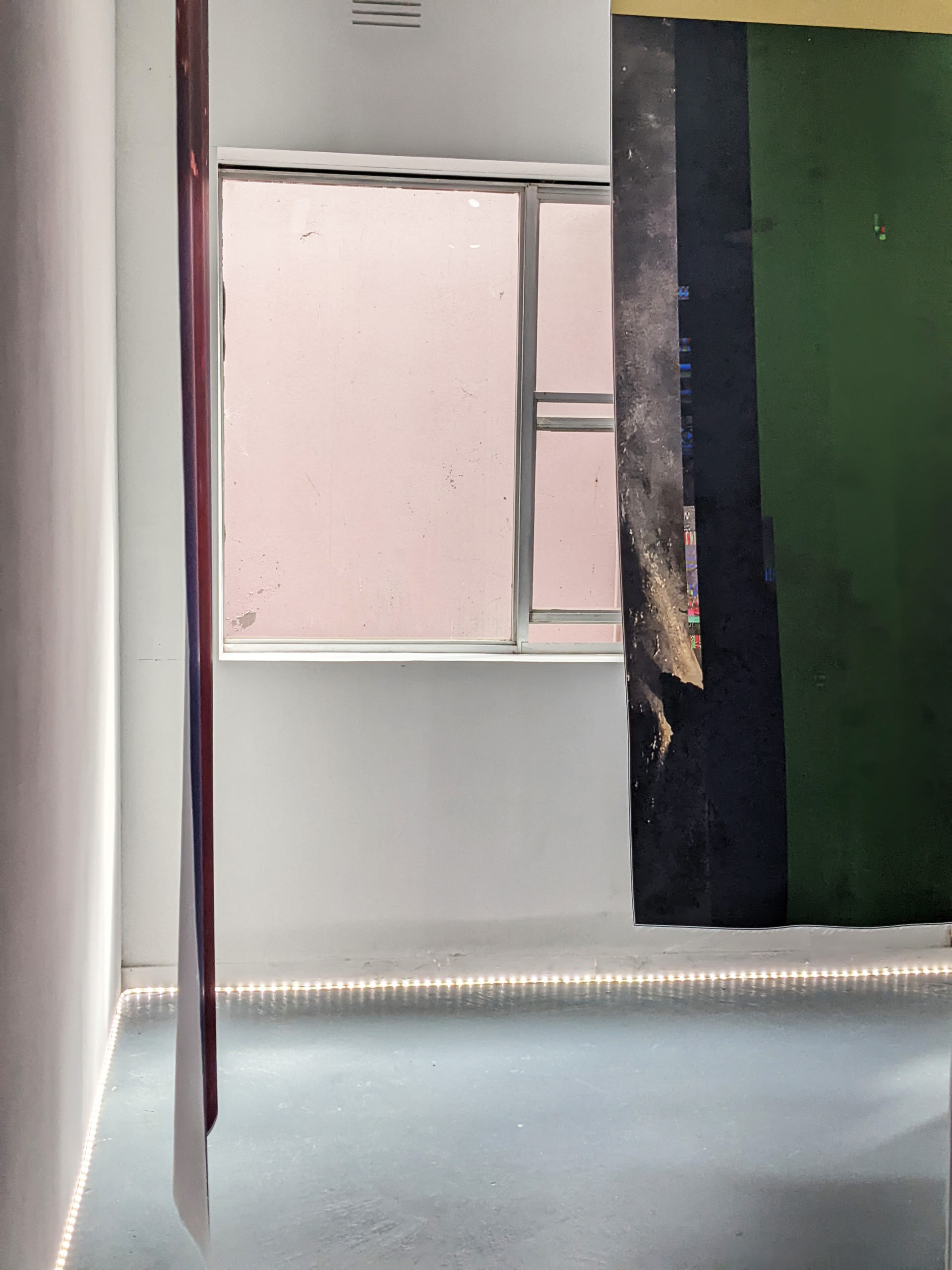RAINFALL. Original Soundscape. 7:38 mins. Nathan Jokovich. 2022.
RAINFALL
FIVE WALLS
March 23- April 9, 2022
“Sister Satan declares, the forged elegies are home to me.
We drop them from helicopters into the sea.”
Michael Palmer; Little Elegies for Sister Satan; Tenth Elegy.
This is an exhibition about data collection; the Internet as a progenitor of images; algorithmic generation of dangerous ideas; Hieronymus Bosch’s painting The Garden of Earthly Delights; and the narratives that thread these entities together.
RAINFALL consists of a body of work, produced by intercepting the data code of digital images of Bosch’s The Garden of Earthly Delights. The data files of the digital images have then been thread through a sound program, to produce a unique sound scape to accompany the visual work. What does a digital image sound like? How can sound visualise the internet as a space? How can one address the uncertainty manifest by navigating the plethora of (mis) information on the internet?
Located in the Northern Territory, Pine Gap is an important Intelligence Base for the United States that controls U.S. Spy Satellites, monitors wireless communications and gathers strategic and tactical military, scientific, political and economic data signals across the former Soviet Union, China, South Asia, East Asia, the Middle East, Eastern Europe, and territories in the Atlantic Ocean. Code-named “RAINFALL,” the remote, isolated base houses 39 radar dishes, concealed underneath golf ball-like structures, within a high security compound. It functions to monitor wireless communications on the ground, such as those sent and received by mobile phones, radios and satellite uplinks; to gather intelligence from foreign military data systems; and to provide geolocational data via mobile phone tracing for U.S. operations in battle, including drone strikes.
Hieronymus Bosch’s Triptych, The Garden of Earthly Delights (1490-1510) depicts the fiery fate of humanity consumed by pleasure, fetish and consumption. Writhing with whimsical symbolism and religious allegory, history is read as a narrative with sin, the central panel, the connecting link between Heaven and Hell.
Both Pine Gap and Bosch’s work present alternate manifestations of the internet as a space. Both could be read as allegories for the digital today. The seductive nature of the glowing screen, the premise of connection and the ease of access to a tide of information, conceals the idea of data syphoning through large scale marketing platforms and algorithmic prediction and its influence on ideas, which today has become increasingly problematic. Misinformation and a lack of accountability has become endemic, and a perceived lack of truth and transparency prevails during a time when the quest for truth is stronger than ever. This generates a feedback loop, where the failure to comprehend an increasingly complex world, leads to the generation of more and more data through more and more convoluted narratives, which only act to further cloud understanding and cement ideology and opinions.
Pine Gap, the high-security isolated storage compound located in the Australian Desert, with its data vacuuming capabilities, is probably never considered as one navigates Google, social media feeds and YouTube videos. Looking beyond the surface of Bosch’s painting, the symbolic repetition of the madroño, a strawberry like fruit that tastes bitter, unlike its luscious exterior, poses a trap to all whom consume its flesh. The orgy of bodies amongst a wild landscape in transition, is a strong metaphor for the internet today, where boundaries defining truths become blurred. The perceived orgy of ideas floated on the internet, reduces the delineation of behaviour, attitudes, ideas and political agendas to a porous soup. Ideas (and images) circulate within loops through algorithms and then remain dormant for some time, until they’re clicked on and opened to recirculate in an endless sea, creating limitless variations from a single seed. At the same time, it proposes new opportunities for connection through pleasure, business, scientific and creative pursuits.
The glossy screen becomes a double-edged sword. Symbolically, the bizarreness of Bosch’s work mirrors the strangeness of human experience today as one navigates the internet. Something so seductive could be so repellent, something so beautiful could be so terrifying underneath the glossy facade and something proposing connection could be so disconnecting and divisive. Above all, something posing so many conundrums could be so integral to existence in the 21st Century and hold so much promise projecting to the future.
Ultimately knowledge, understanding and the quest for truth goes beyond the screen. This involves acknowledging the internet for its current limitations with respect to marketing engines and algorithmic generation. The internet is not a universal beacon for truth. Complex answers demand human intervention and qualities such as empathy, instinct, judgement, open-mindedness and discourse that extends beyond any current internet application or Google search. Will the rain keep falling? It is this thought that I will leave you with as you navigate the exhibition, with sound on.
Nathan Jokovich
Gallagher, Ryan. The Intercept_ The U.S. Spy Hub in the Heart of Australia. August 20, 2017. https://theintercept.com/2017/08/19/nsa-spy-hub-cia-pine-gap-australia/
Gotthardt, Alexa. Decoding Bosch’s Wild, Whimsical “Garden of Earthly Delights.” Artsy. October 18,2019. https://www.artsy.net/article/artsy-editorial-decoding-boschs-wild-whimsical-garden-earthly-delights
Palmer, Michael. Little Elegies for Sister Satan. New Directions Publishing Corporation. New York. 2021.






fAaLTA_PrinceofHell. Dye Sublimation Print mounted on Custom fabricated Aluminium Light Box with Gold 2 Pac Paint. 91.5cm x 122cm x 8cm. Nathan Jokovich. 2022.







Photographic Documentation by Tim Gresham and Nathan Jokovich
